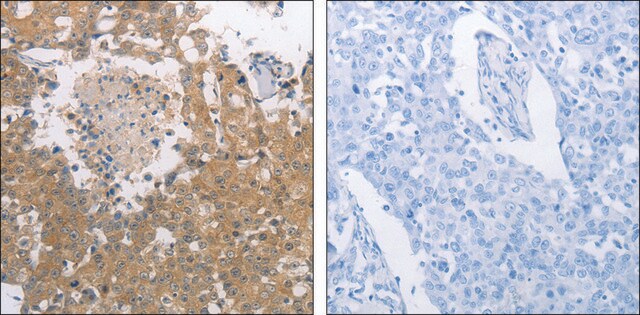PLA0112
Rabbit anti-CtIP Antibody, Affinity Purified
Powered by Bethyl Laboratories, Inc.
Synonim(y):
COM1, CTBP-interacting protein, CtIP, JWDS, RBBP-8, RIM, Retinoblastoma-binding protein 8, Retinoblastoma-interacting protein and myosin-like, SAE2, SCKL2, Seckel syndrome 2, retinoblastoma binding protein 8, sporulation in the absence of SPO11 protein 2 homolog
About This Item
Polecane produkty
pochodzenie biologiczne
rabbit
Poziom jakości
forma przeciwciała
affinity purified immunoglobulin
rodzaj przeciwciała
primary antibodies
klasa czystości
Powered by Bethyl Laboratories, Inc.
reaktywność gatunkowa
mouse, human
metody
immunoprecipitation (IP): 2-10 μg/mg
western blot: 1:2,000-1:10,000
nr dostępu
NP_002885.1
Warunki transportu
wet ice
temp. przechowywania
2-8°C
informacje o genach
rabbit ... CtIP(5932)
Immunogen
Postać fizyczna
Inne uwagi
Oświadczenie o zrzeczeniu się odpowiedzialności
Nie możesz znaleźć właściwego produktu?
Wypróbuj nasz Narzędzie selektora produktów.
Kod klasy składowania
12 - Non Combustible Liquids
Klasa zagrożenia wodnego (WGK)
nwg
Temperatura zapłonu (°F)
Not applicable
Temperatura zapłonu (°C)
Not applicable
Certyfikaty analizy (CoA)
Poszukaj Certyfikaty analizy (CoA), wpisując numer partii/serii produktów. Numery serii i partii można znaleźć na etykiecie produktu po słowach „seria” lub „partia”.
Masz już ten produkt?
Dokumenty związane z niedawno zakupionymi produktami zostały zamieszczone w Bibliotece dokumentów.
Nasz zespół naukowców ma doświadczenie we wszystkich obszarach badań, w tym w naukach przyrodniczych, materiałoznawstwie, syntezie chemicznej, chromatografii, analityce i wielu innych dziedzinach.
Skontaktuj się z zespołem ds. pomocy technicznej